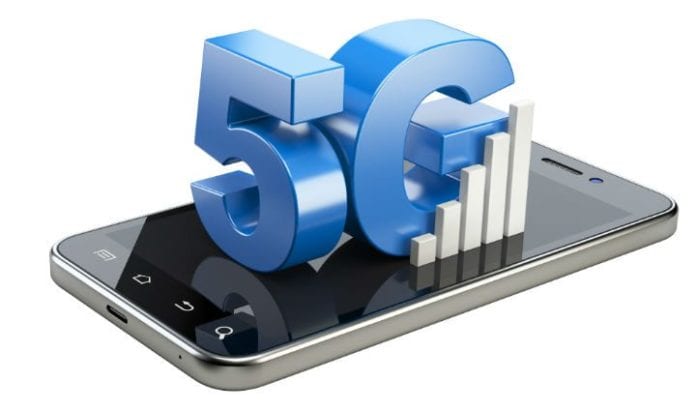IGR explains the reasoning for putting out today forecasts for 5G connectivity and bandwidth needs up to a decade down the road
We recently published a report with a model of the global “5G” connections for 2021 to 2026, combined with the bandwidth these connections are expected to generate. Obviously, this is a model of what could happen, rather than a strict forecast of activity in 2017 or 2018 – looking ahead five to 10 years is too problematic for a traditional forecast.
So why did we take this approach and model the market for 2021 to 2026? Because it made us look hard at what is happening in the world’s mobile markets today, the developments that are taking place now and what will need to be done in the next few years in order for 5G to achieve commercial service at the end of the decade.
In other words, unless the mobile industry lays the groundwork in the next few years, commercially launching 5G in 2021 will be difficult at best.
While it may seem a long time until 2020 and 2021, in mobile industry terms it is more like “the week after next” or maybe “next month.” Due to the complexities in planning, zoning and building mobile networks, operators must look a few years ahead. So in reality, operators today are firming up plans for 2017, and have a pretty good idea of what they will be doing in 2018. Looked at this way, 2020 is really not far away at all. So what did we assume in the model? The key assumption was twofold:
• “5G” would mean networks implementing the IMT-2020 specification not some rebranded version of LTE-A.
• The IMT-2020 specification would be finalized so that the first networks could be built starting in 2020. The first commercial services would then launch at various times in 2021, and beyond.
We also looked at each of the regions in the world and identified which would be likely to lead with IMT-2020 and which would likely lag. Then we considered the population growth for each region, the current and near forecasts for mobile penetration (specifically LTE) and how quickly LTE originally grew in those regions.
Another key assumption was that sufficient smartphones and big screen devices would be available immediately to support IMT-2020 services when they commercially launched. While we expect the “Internet of Things,” connected vehicles and industrial solutions to come fairly quickly into the model period, we did assume that the IMT-2020 early adopters would use smartphones, tablets, etc.
Coupled to this was the assumption consumers and enterprises could afford the IMT-2020 services. Just as mobile operators did not differentiate pricing between 3G data and LTE data, we assumed a gigabyte of IMT-2020 would cost the same as a gigabyte of LTE in 2021. While the economics of mobile services and how much end users can actually spend on telecommunications factors in, the reality is IMT-2020 will enable the industry to offer more data at a lower price per gigabyte.
That said, simply offering “faster access to the Internet” or “bigger data packages” will not be enough. The “faster is better” mantra certainly worked for LTE, but the speeds of today’s LTE and tomorrow’s LTE-Advanced networks are sufficient to accomplish most tasks that consumers need to do on their smartphones and tablets.
So, we looked hard at the services that IMT-2020 would likely support (details will be in future IoT and 5G studies). As an example, however, this includes new capabilities such as network slicing and mobile virtual reality – including the existence of devices that can benefit from those new services. Our model assumes these 5G-specific services will be affordable and perceived as valuable by end users – otherwise why bother building the networks?
The end result is iGR now has a market model that can be amended as the 5G IMT-2020 technology and market develops over the next few years. As current assumptions are amended or proven and new assumptions are applied, the model will change and show the impact on the 5G connections and bandwidth.
In short, we now have a basis to start from and can see how changing specific assumptions changes the potential market. And in case you were wondering, yes, the model shows good growth in the number of 5G connections (although the rate of growth varies significantly between the regions) and, yes, the amount of bandwidth to be consumed in 2026 is scary. The 5G bandwidth model alone should be incentive enough for the mobile industry to knuckle down and get the IMT-2020 specification finalized.

Iain Gillott, founder and president of iGR, is an acknowledged wireless and mobile industry authority and an accomplished presenter. Gillott has been involved in the wireless industry, as both a vendor and analyst, for more than 20 years. The company was founded in 2000 as iGillottResearch in order to provide in-depth market analysis and data focused exclusively on the wireless and mobile industry. Before founding iGR, Gillott was a group VP in IDC’s telecommunications practice, managing IDC’s worldwide research on wireless and mobile communications and Internet access, telecom brands, residential and small business telecommunications and telecom billing services. Prior to joining IDC, Gillott was in various technical roles and a proposal manager at EDS (now Hewlett-Packard), responsible for preparing new business proposals to wireless and mobile operators.
Editor’s Note: Welcome to Analyst Angle. We’ve collected a group of the industry’s leading analysts to give their outlook on the hot topics in the wireless industry.

